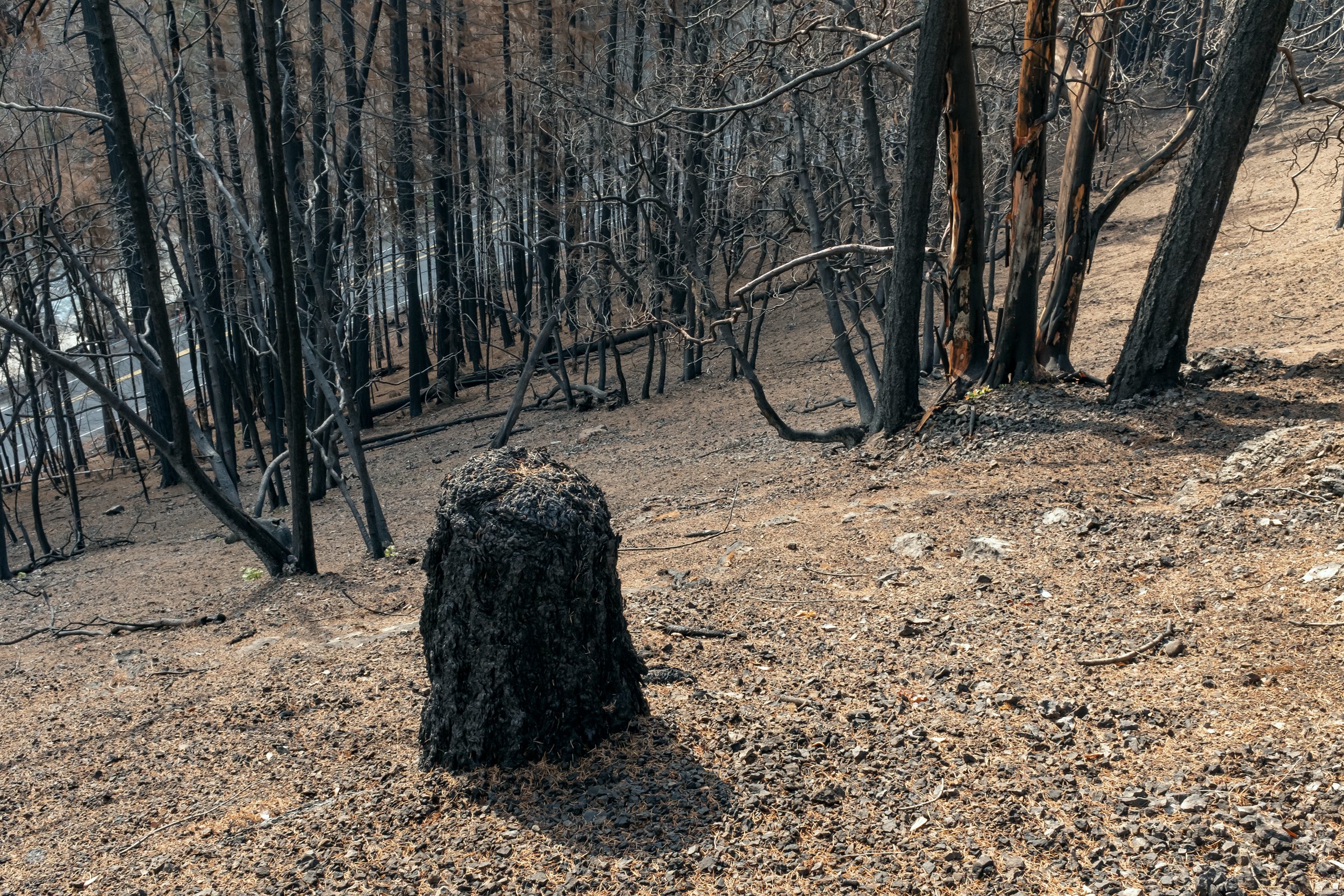
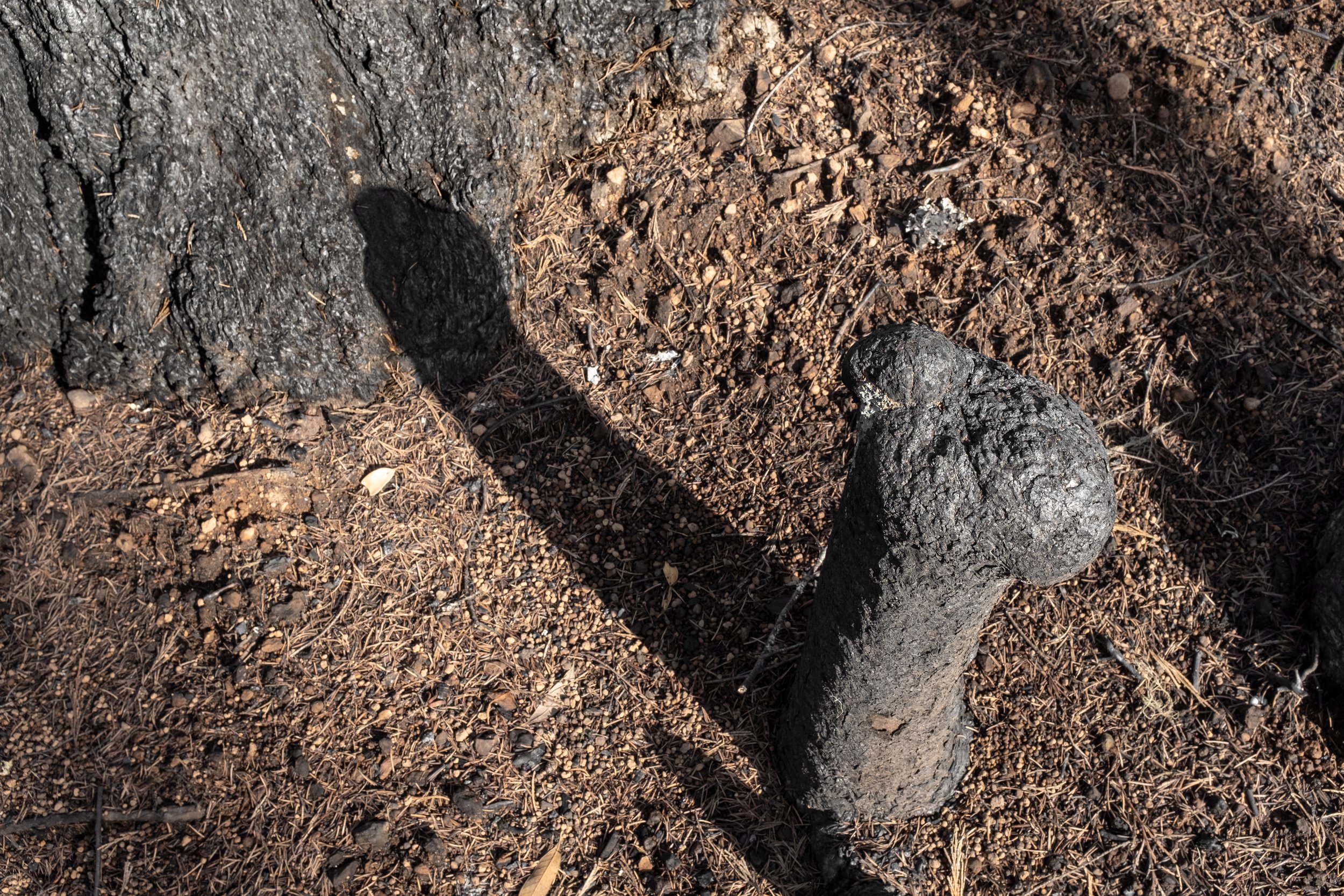
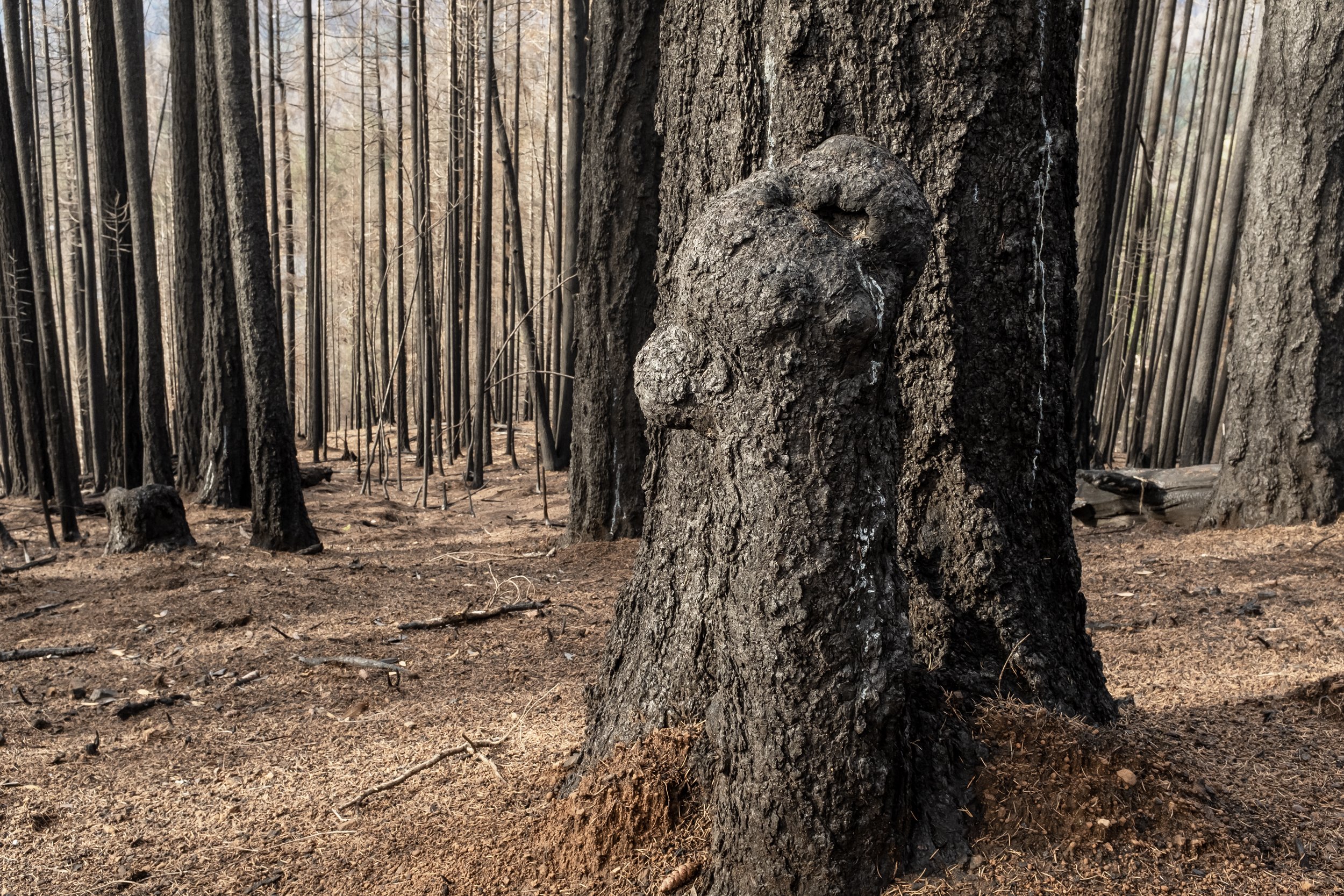
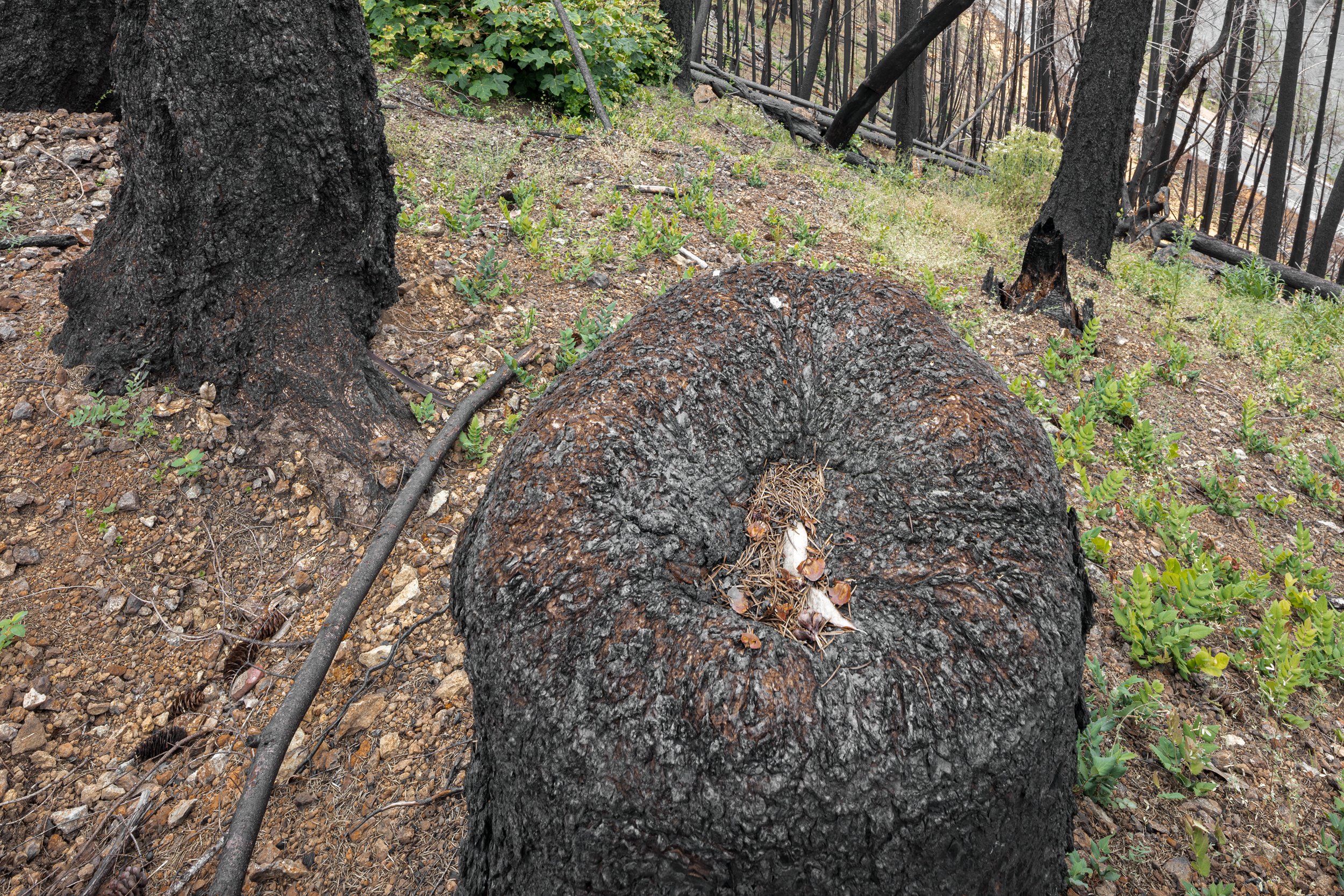
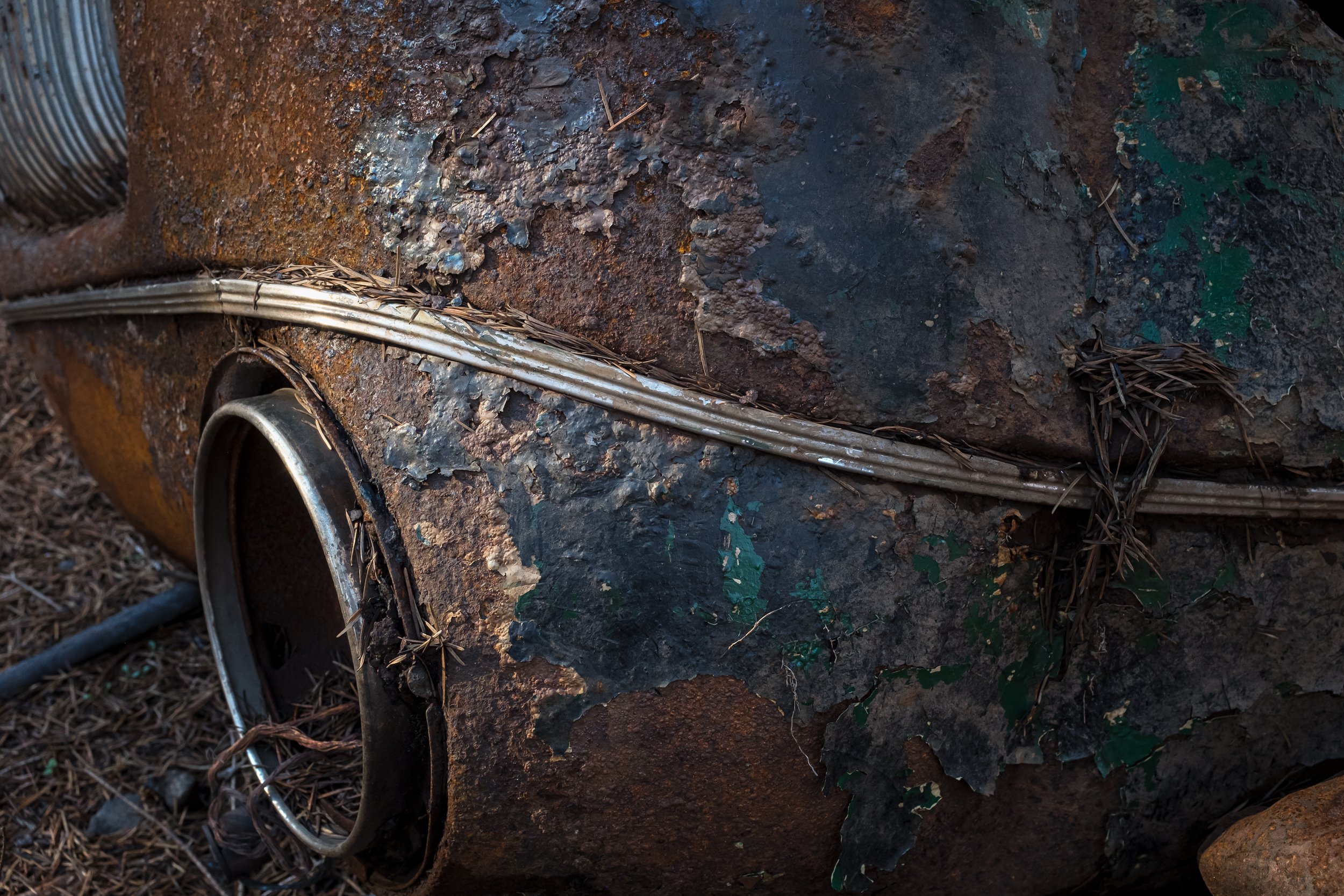
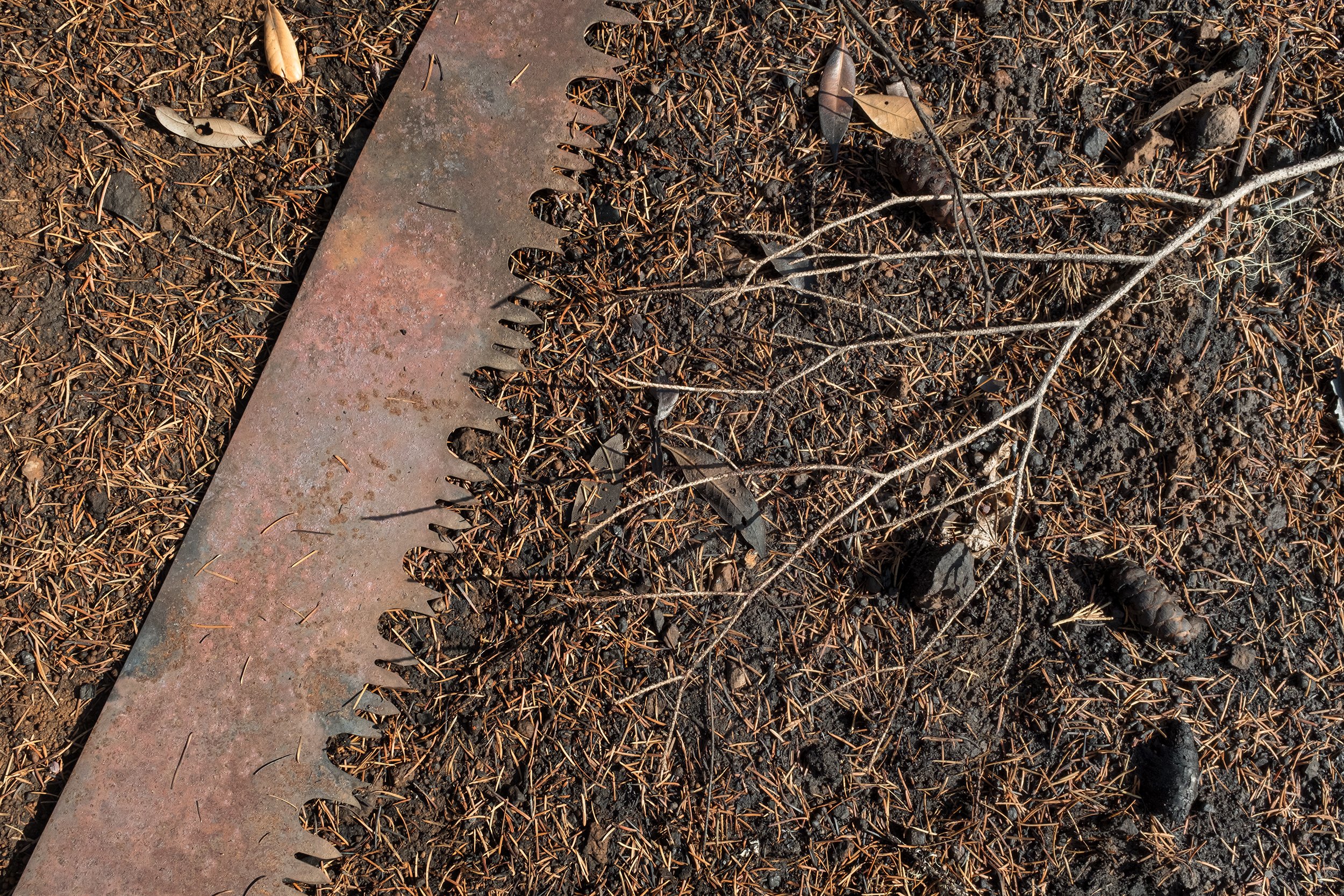
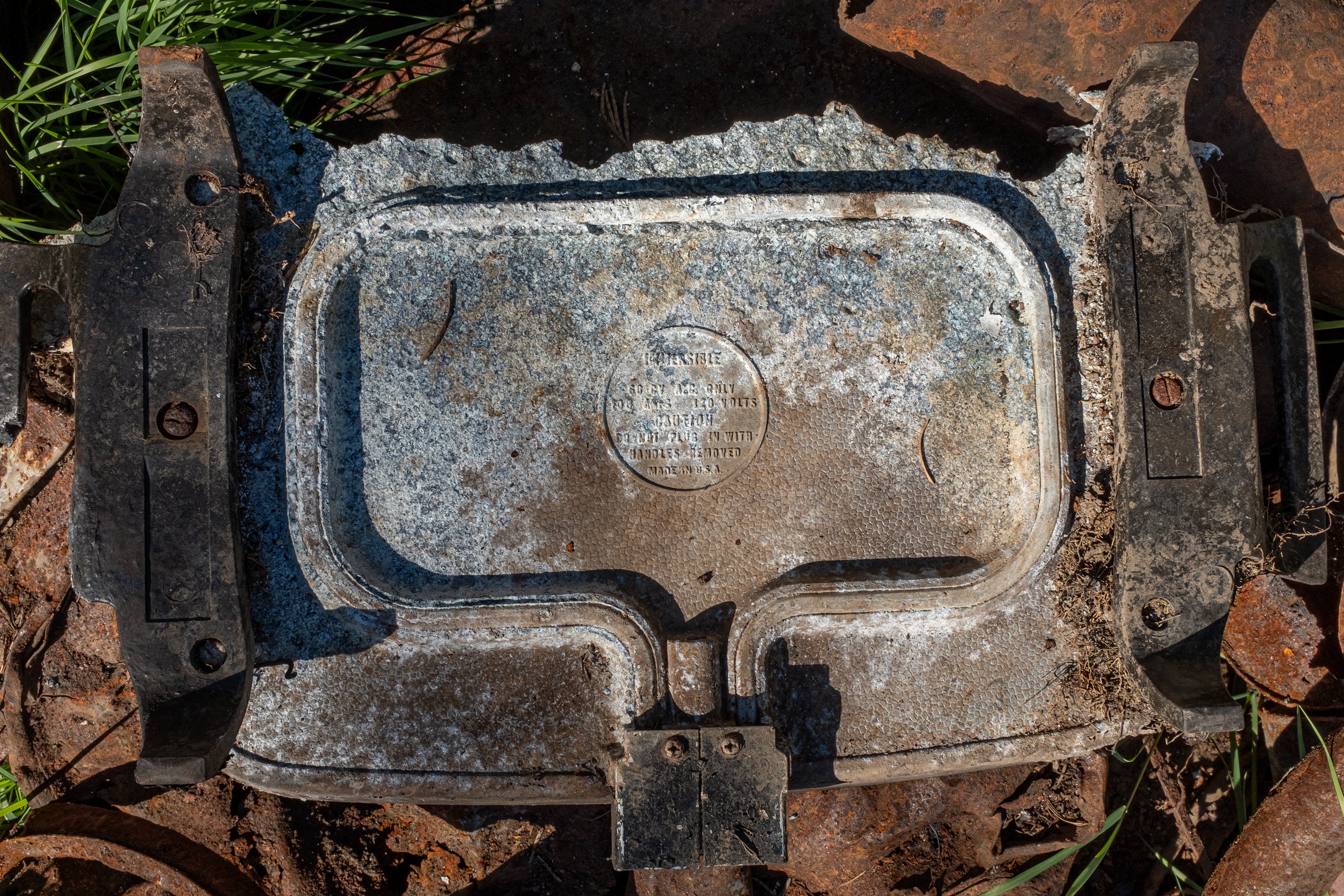
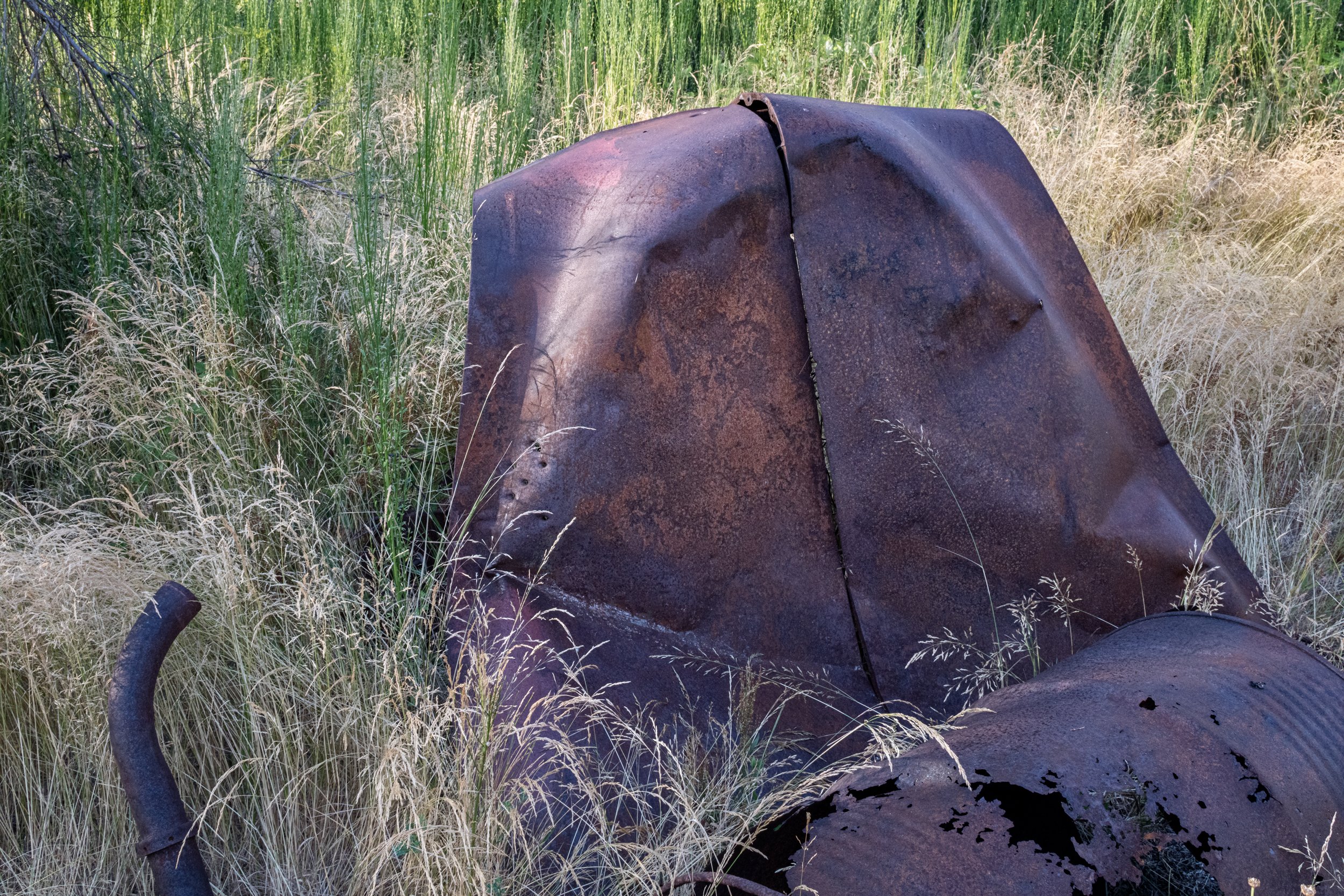
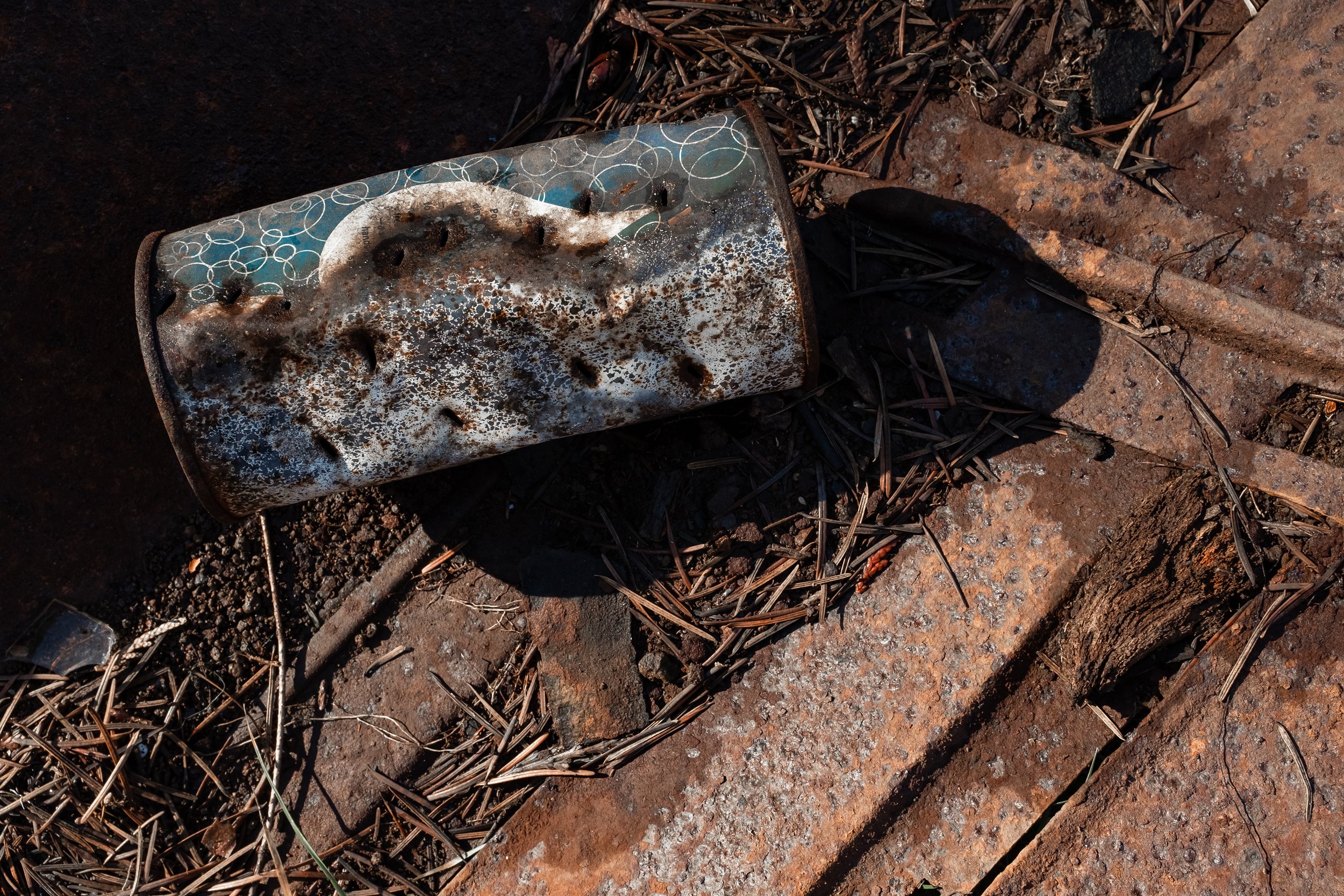
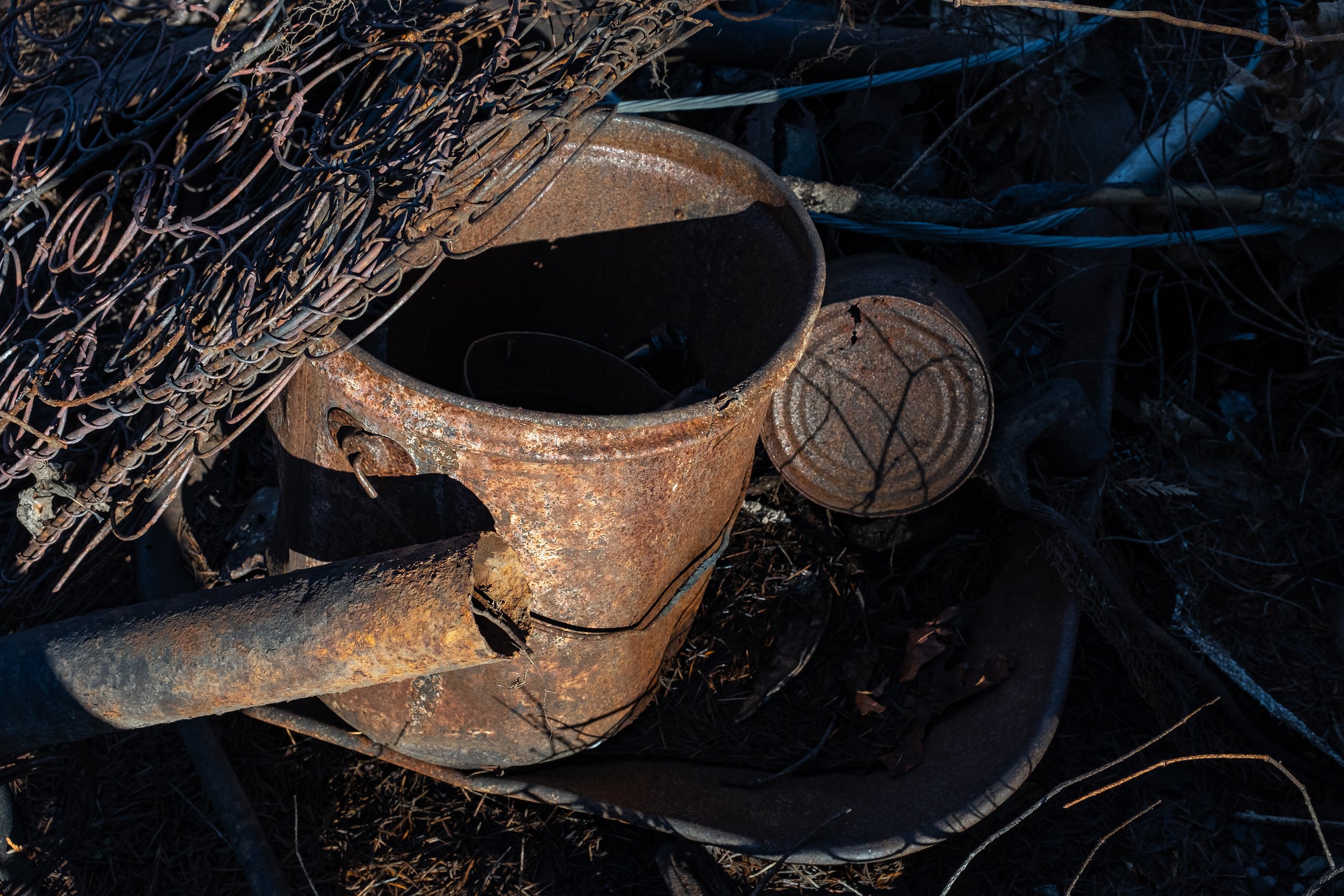
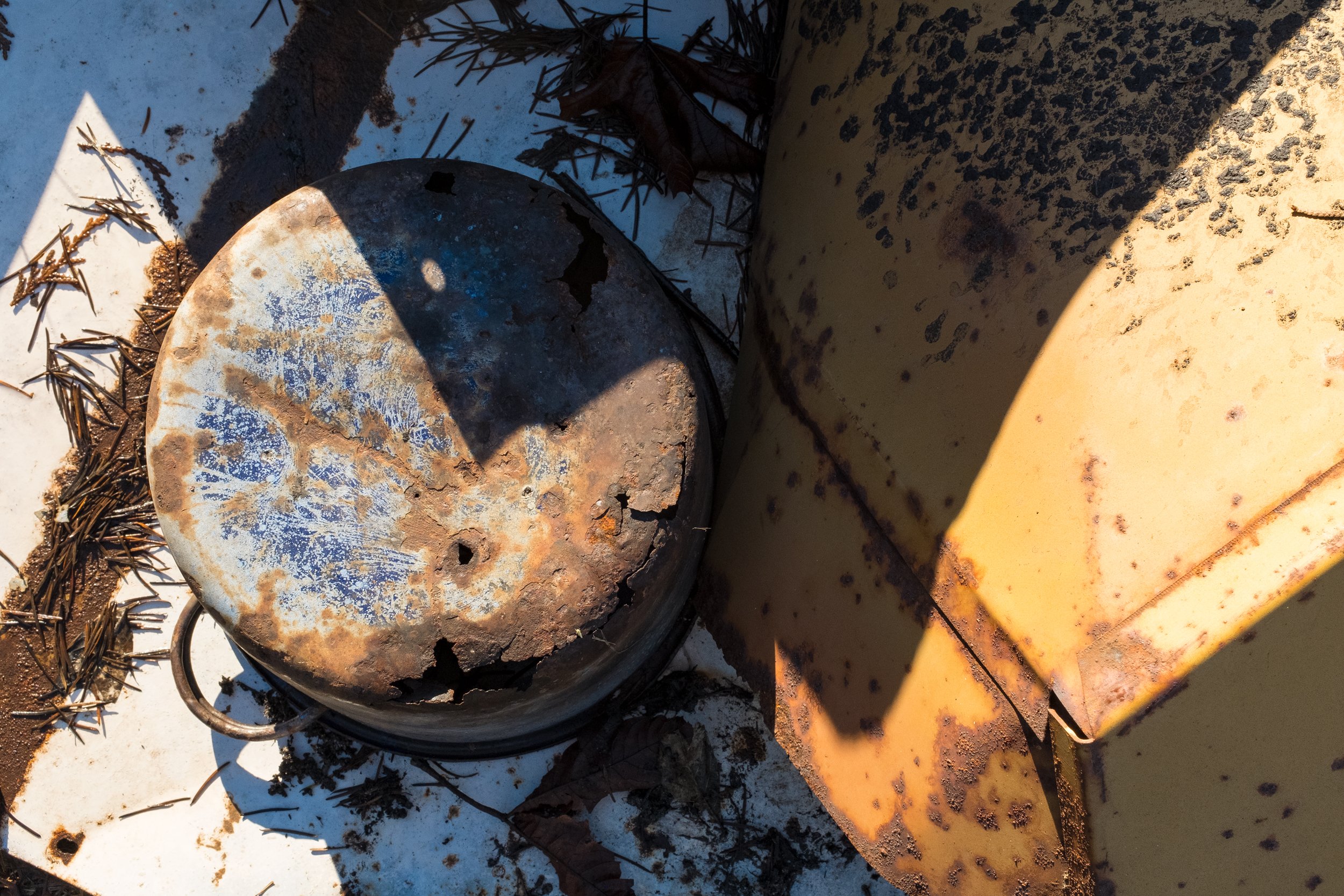
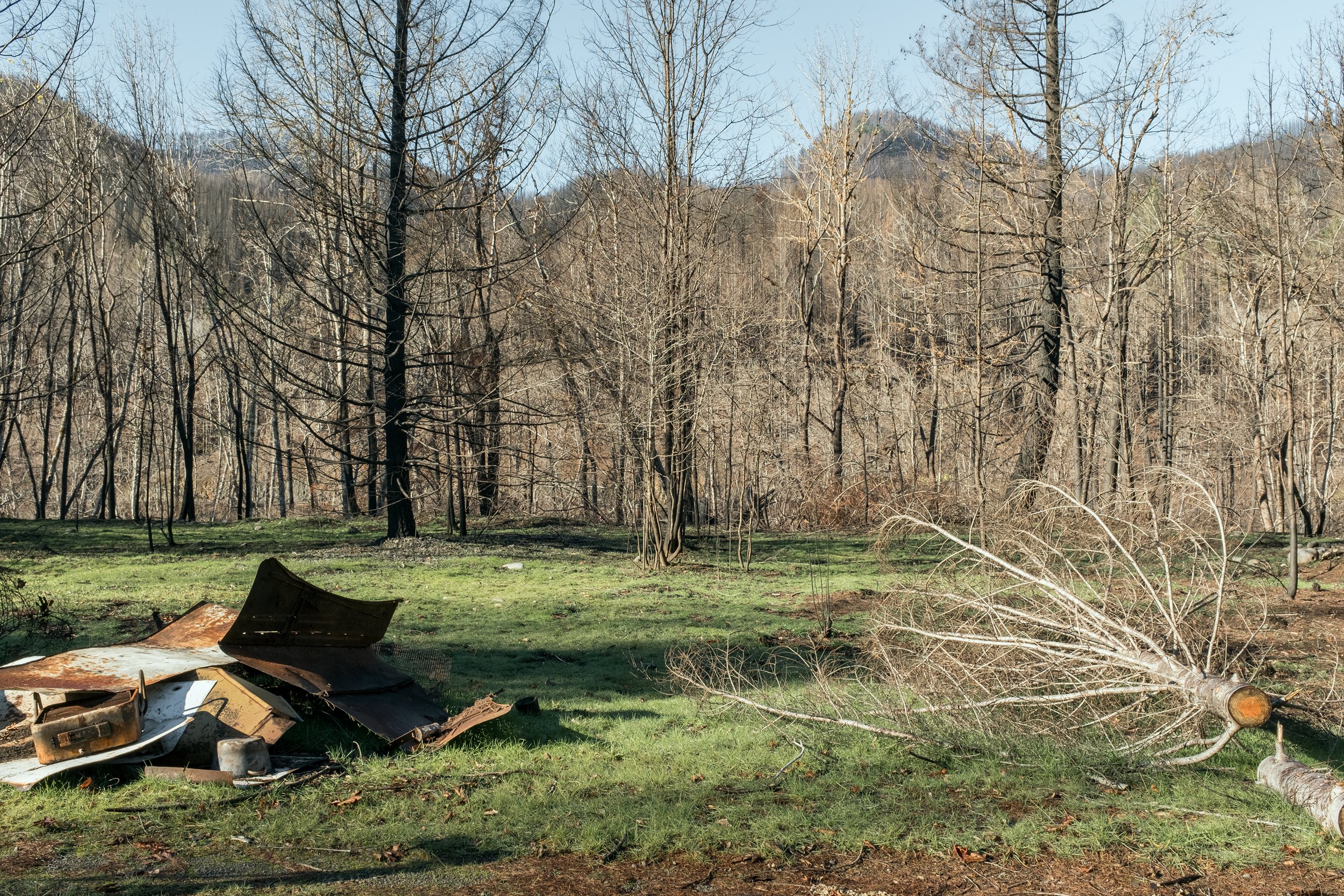
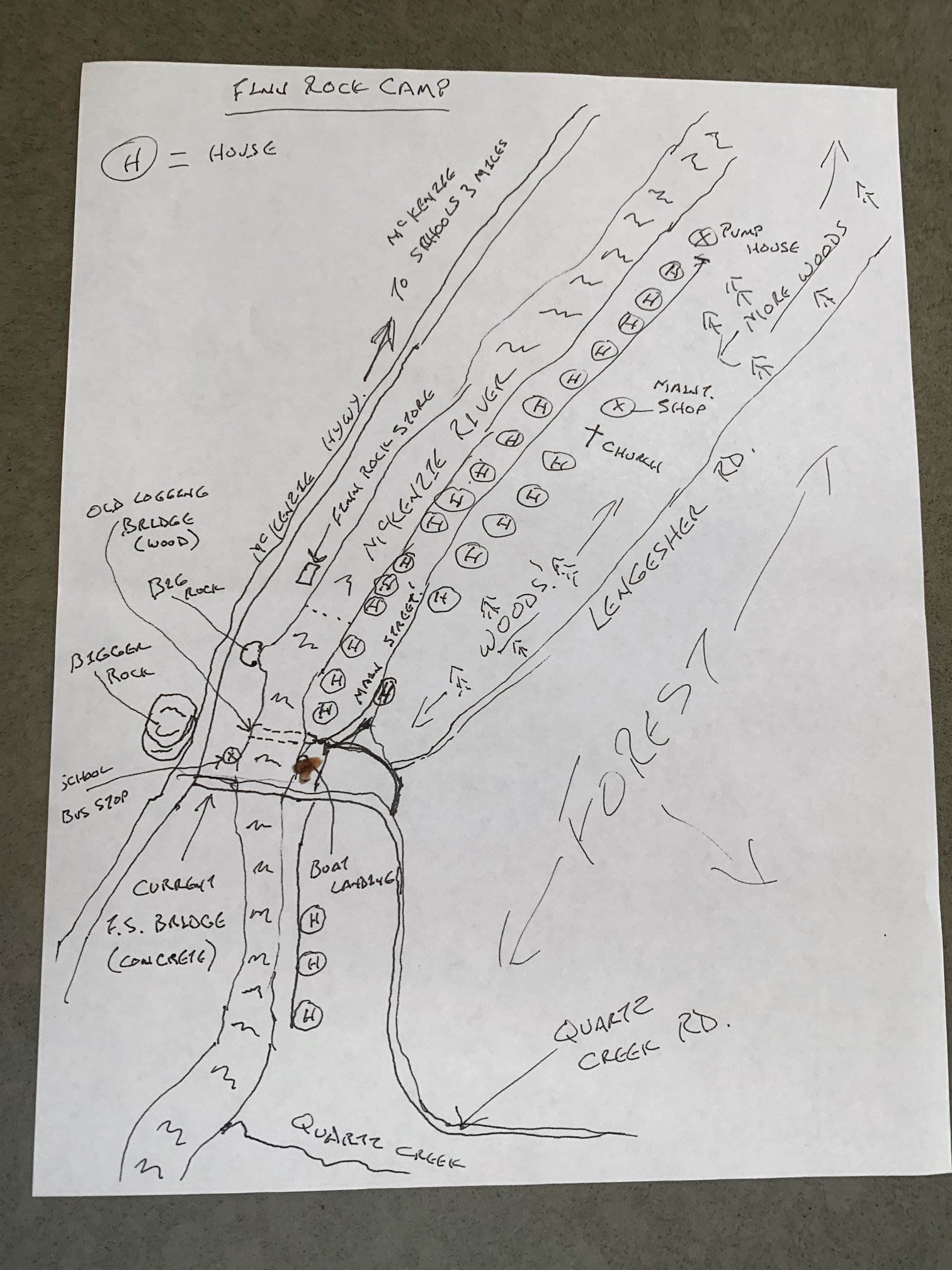
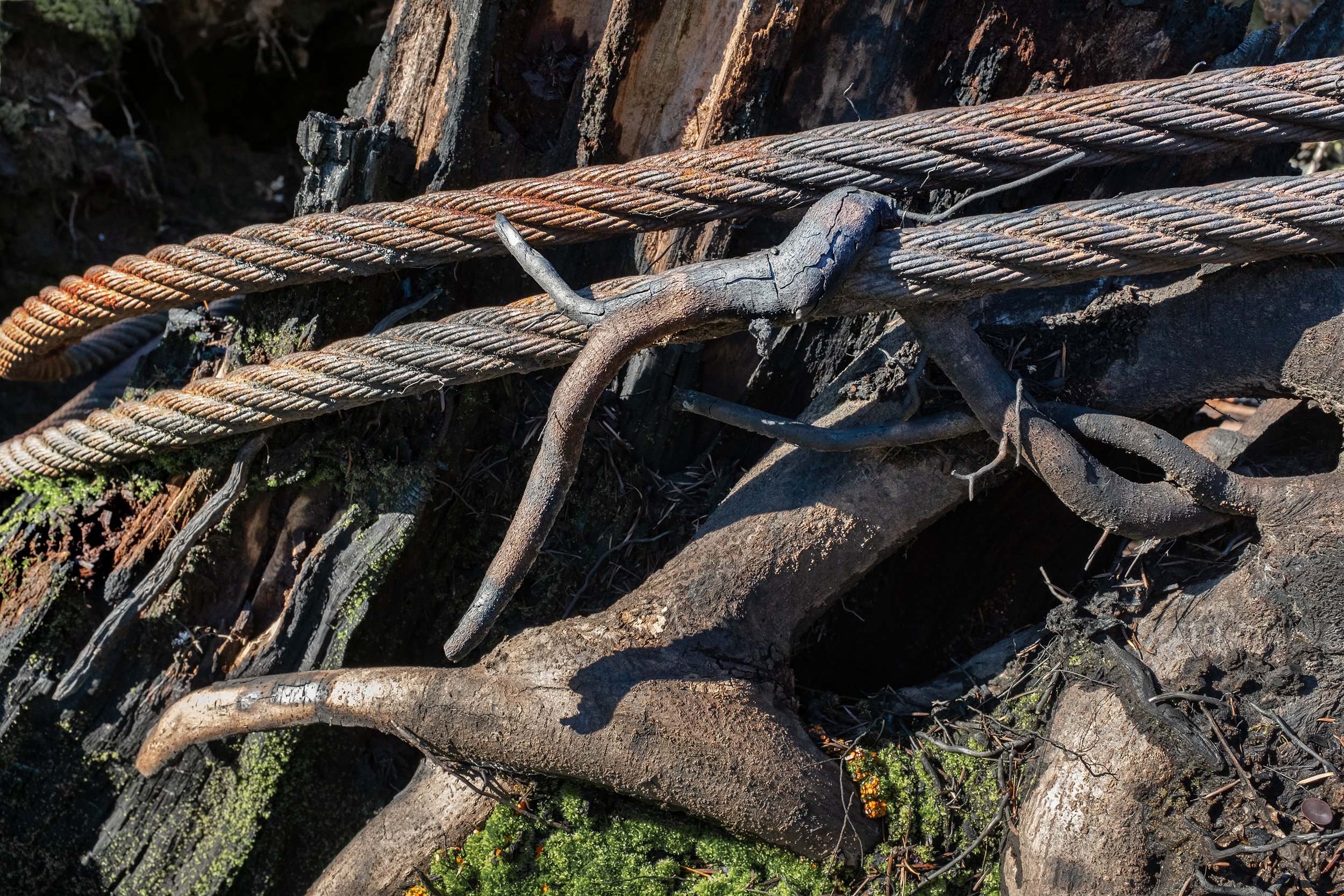
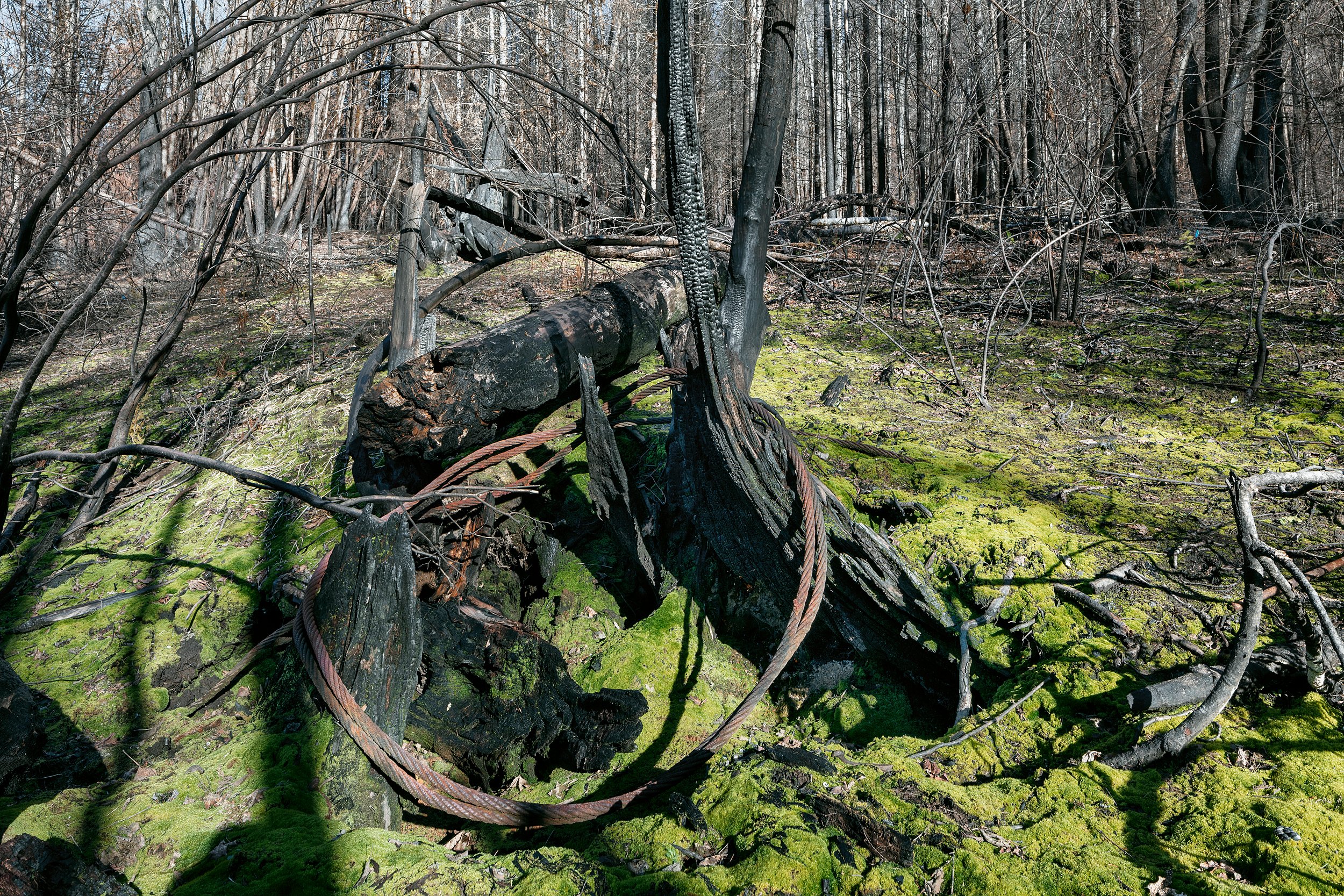
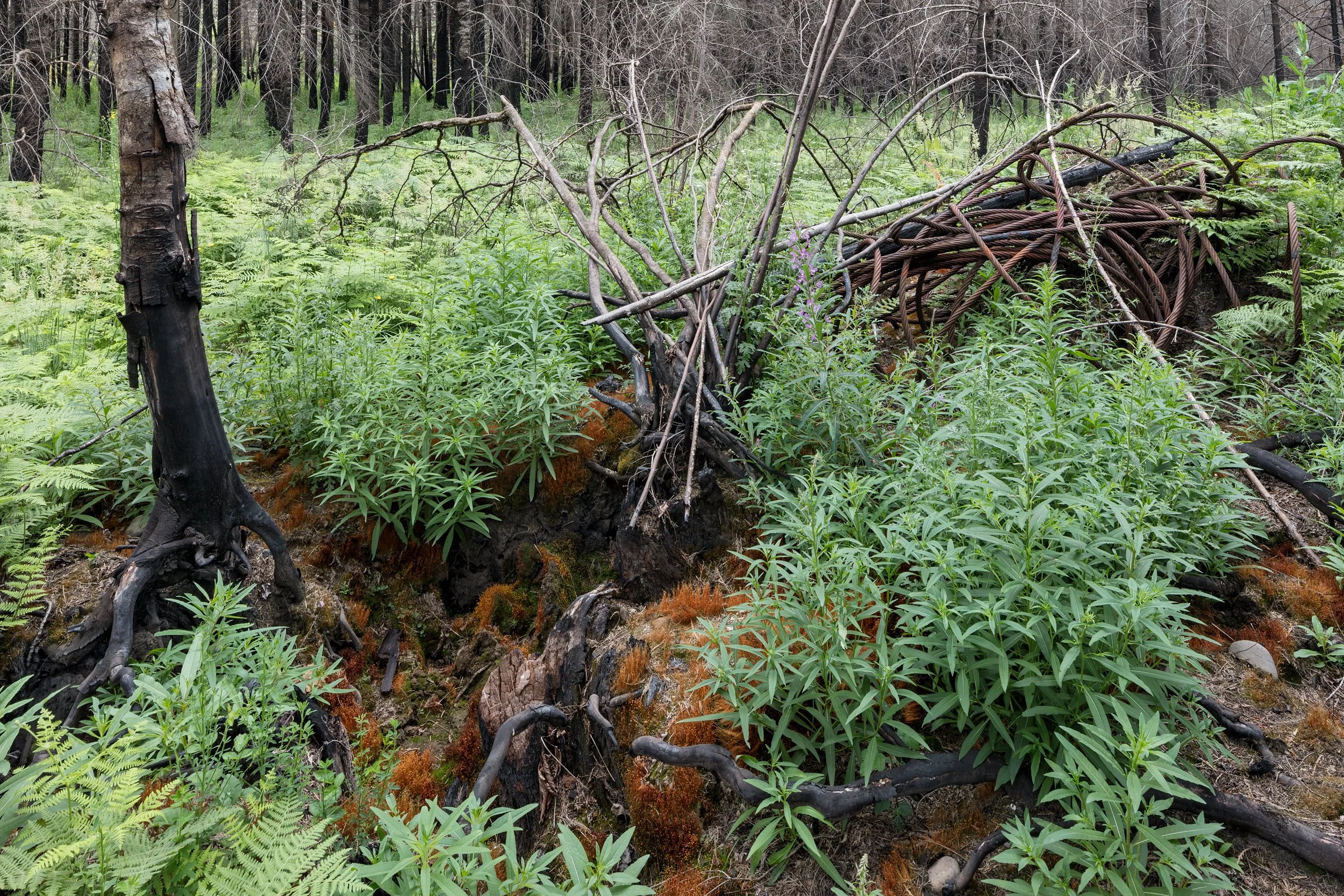



Your Custom Text Here
LIVING STUMPS
The fire burned away underbrush, revealing these small trees that were most likely cut as part of a forest thinning operation long before the fire. The trees covered over their wounds with scar tissue and were sustained by nutrients shared through roots and fungal hyphae connected with nearby trees (the exudate dripping from some of them is evidence of this symbiosis). They continued living despite not being able to produce a single needle to photosynthesize and create their own nutrients.
FINN ROCK LOGGING CAMP
Legacies of human presence abound across the landscape. From the 1930’s through the 1960’s a small logging camp occupied part of the Finn Rock Reach on the floodplain of the McKenzie River. It was known as Finn Rock Logging Camp. The workers and their families lived in 24 cedar cabins. Additional structures included a maintenance shop, pump house, store and church. All these structures were removed decades ago.
When the fire burned away the dense underbrush, it revealed a metallic history of the camp’s inhabitants. Charred car parts, waffle irons, tea kettles, a roller skate, baby stroller parts and more littered the burned site. Volunteers with the McKenzie River Trust spent many days gathering the metal into piles along Huckleberry Lane. Much of the metal was loaded onto trucks and hauled to a recycling center.
LOGGING CABLES
Logging cables, flat-topped stumps, and highly decomposed logs with cut ends lying on the ground are legacies of past land use revealed when the fire removed underbrush. Some of these legacies date from more than a century ago. Land use practices today, be they conservation or further forestry, will leave legacies far into the future.
LIVING STUMPS
The fire burned away underbrush, revealing these small trees that were most likely cut as part of a forest thinning operation long before the fire. The trees covered over their wounds with scar tissue and were sustained by nutrients shared through roots and fungal hyphae connected with nearby trees (the exudate dripping from some of them is evidence of this symbiosis). They continued living despite not being able to produce a single needle to photosynthesize and create their own nutrients.
FINN ROCK LOGGING CAMP
Legacies of human presence abound across the landscape. From the 1930’s through the 1960’s a small logging camp occupied part of the Finn Rock Reach on the floodplain of the McKenzie River. It was known as Finn Rock Logging Camp. The workers and their families lived in 24 cedar cabins. Additional structures included a maintenance shop, pump house, store and church. All these structures were removed decades ago.
When the fire burned away the dense underbrush, it revealed a metallic history of the camp’s inhabitants. Charred car parts, waffle irons, tea kettles, a roller skate, baby stroller parts and more littered the burned site. Volunteers with the McKenzie River Trust spent many days gathering the metal into piles along Huckleberry Lane. Much of the metal was loaded onto trucks and hauled to a recycling center.
LOGGING CABLES
Logging cables, flat-topped stumps, and highly decomposed logs with cut ends lying on the ground are legacies of past land use revealed when the fire removed underbrush. Some of these legacies date from more than a century ago. Land use practices today, be they conservation or further forestry, will leave legacies far into the future.